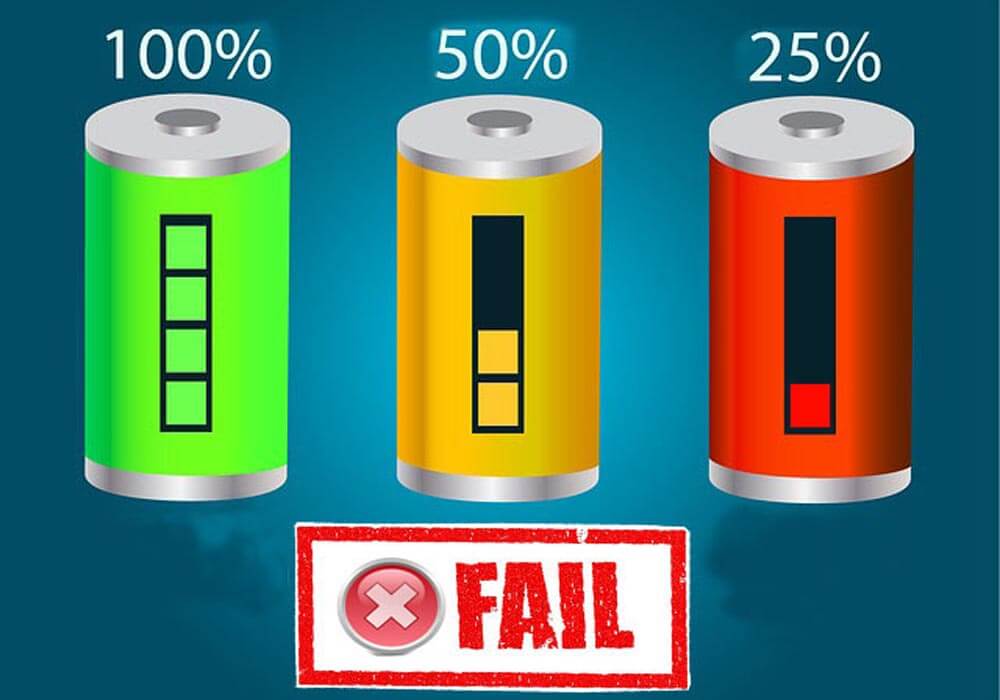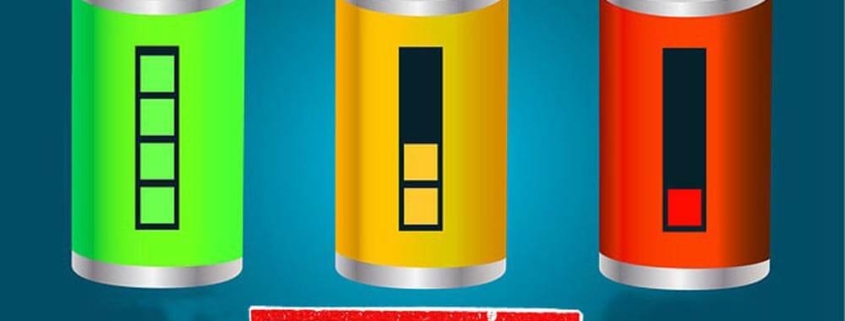How do I know if my lithium-ion battery is bad?
Whether using your laptop, smartphone, or another device with a lithium-ion battery, it is essential to know when your battery is not functioning correctly. Identifying if your lithium-ion battery is bad can help you save time and money in the long run. This article will outline the signs of a bad lithium-ion battery and steps to take when you suspect that yours may be faulty.

How do I know if my lithium-ion battery is bad?
The three common ways to tell if your lithium-ion battery is bad are checking its voltage, looking at its charge cycle count, or noticing any physical damage. If the voltage is less than 3.7 volts, the charge cycle count is much lower than predicted for your battery type, or the battery is swelling or leaking. It could signal that your battery has failed.
Signs of a bad lithium-ion battery
Swelling or leaking of the battery
A lithium-ion battery that is swelling or leaking is not performing correctly and should be replaced. When heated, the liquid electrolyte in lithium-ion batteries expands, causing the battery to swell. A leaking electrolyte indicates that the battery has failed and must be replaced. To avoid potential safety issues, replace your lithium-ion battery as soon as possible if you see any swelling or leaking.
Rapid loss of charge or shorter battery life
The most typical symptom is a quick loss of charge or a reduction in battery life. This could indicate that your gadget isn’t keeping a charge as well as it once did or that you need to recharge it more frequently than usual. Other indicators include the device turning on slowly, charging taking longer than expected, or the battery becoming unusually hot. If you’re experiencing any of these symptoms, it’s time to replace your lithium-ion battery.
Overheating or unusual warmth while charging
A battery should remain cool to ensure optimal performance and longevity. Overheating or unusual warmth while charging may indicate a faulty battery. It would help if you took this as a warning sign that something is wrong. Suppose your lithium-ion battery overheats or feels warm while charging. In that case, it’s best to discontinue use immediately and renew batteries if you have an extra one available.
Physical damage or deformations
Physical damage or deformations are a sure sign that your lithium-ion battery is bad. If you notice any bulging, swelling, or dents on the battery’s exterior, it’s time to replace it. Additionally, any visible signs of corrosion or rust on the battery’s terminals indicate a faulty cell and should be replaced as soon as possible.
How to test a lithium-ion battery?
Testing a lithium-ion battery is a simple process that may be completed in a few steps. To begin, use a multimeter to measure the voltage of the battery. Next, connect your multimeter leads to both terminals of your lithium-ion battery to measure its resistance. Finally, you can test its capacity by draining it and then measuring its capacity using a charge cycle analyzer.
Using a multimeter to check the battery’s voltage
To begin, turn on the multimeter and set it to measure voltage. Connect the multimeter probes to the positive and negative terminals of the battery. The multimeter’s LED display will show the battery voltage at that moment. A wholly charged single cell should measure around 4.2V. In contrast, voltages as low as 3.3V may indicate that the battery needs to be recharged. If it’s greater than expected, it could tell that your battery has been overcharged and needs to be replaced.
Additionally, make sure to alter the parameters so that it can measure at least the maximum amount of volts the battery can generate. Once all these processes are accomplished, it is simple to ascertain the battery’s voltage and condition.
Measuring the battery’s internal resistance
Measuring the internal resistance can tell you how much energy the battery can deliver when needed, how much power it has left available, and whether or not it is functioning correctly. Knowing this information will help keep your device running smoothly and safely.
To test a lithium-ion battery’s internal resistance, you’ll need to use a multimeter, which measures electrical current flow through two wires connected to the battery’s terminals. Set your multimeter to measure OHMs and connect each wire to one of the terminals on the battery while taking care not to touch any exposed metal parts with your hands or tools. Once everything is connected correctly, take a reading of the Ohms displayed on your multimeter – that number will indicate your battery’s overall performance and condition.
Checking the battery’s capacity with a capacity tester
The first step in testing the capacity of a lithium-ion battery is to use a capacity tester. A capacity tester measures the amount of power stored inside the battery. It helps determine how much charge it holds compared to when it was brand new. The test involves connecting the capacity tester directly to the battery’s terminals and taking multiple readings from different discharge levels until it reaches zero or empty state voltage (ESV). This will allow you to accurately gauge its capacity and compare it with what should be expected for that battery.
Causes of a bad lithium-ion battery
There are four main causes for a bad lithium-ion battery: overcharging or over-discharging, physical damage or deformations, age and usage history, and extreme temperatures.
Overcharging or over-discharging
Lithium-ion batteries are susceptible to overcharging and over-discharging, both of which can result in catastrophic damage. Overcharging happens when a battery is charged past its maximum capacity, resulting in decreased performance and probable battery damage. Over-discharging occurs when the battery’s power is depleted too quickly, resulting in reduced performance and perhaps irreparable harm.
Use a dependable charger for your lithium-ion battery; never let it charge overnight or for extended periods. Furthermore, you should avoid depleting the battery before recharging it since this might result in diminished performance or even irreversible damage.
Physical damage or deformations
Physical damage or deformations are among the most common causes of a bad lithium-ion battery. This can range from dents, cracks, and other external deformities to internal damage caused by overcharging or extreme temperatures.
If you notice any physical damage to your lithium-ion battery, it must be replaced as soon as possible. Continuing to use a damaged battery can cause further harm to both the device and the battery itself. Additionally, any physical deformity can indicate that the battery is not functioning correctly and needs to be checked out.
Age and usage history
A lithium-ion battery’s age and usage can both have an impact on its performance. The battery’s capacity to hold a charge gradually declines with age, which is why replacing your battery every few years is critical. Furthermore, you frequently use your device for intense gaming or video streaming activities. In that case, this can shorten the life of your battery.
Exposure to extreme temperatures
Extremely hot or cold temperatures can cause lithium-ion cells to overheat, leading to the formation of dendrites which can reduce battery life. Overheating in lithium-ion batteries is caused by an imbalance between the oxidation state of the active material and its reaction with electrolytes. As a result, elevated operating temperature, charge/discharge cycling, and high current load can all contribute to damage done by extreme temperatures.
It is essential to store your lithium-ion battery correctly to help prevent damage from extreme heat or cold. Keep them at room temperature away from direct sunlight and heat sources like radiators or stoves.
Prevention and Maintenance of lithium-ion batteries
To ensure your lithium-ion battery works optimally, you must take the proper steps to maintain it. Keep proper usage and charging habits, Store them in a cool, dry place, and avoid physical damage.
Proper usage and charging habits
To ensure the highest level of performance and extend your battery’s life, proper usage, and charging habits must be observed.
The most important consideration when using a lithium-ion battery is never letting it drain completely. This can cause permanent damage to the battery’s internal structure, causing it to work less efficiently or not at all. Instead, recharge the battery before it reaches its minimum charge level, typically 20 percent for most devices. Recharging more frequently will help maintain its maximum capacity over time.
When recharging a lithium-ion battery, avoid overcharging and quick charging methods like fast chargers or car adapters which generate excess heat that can harm the cell structure.
Storing the battery in a cool, dry place
Storing a lithium-ion battery in a cool, dry environment is crucial to avoiding and preserving it. This will let the battery run at peak performance for as long as feasible. It’s also critical to prevent excessive hot and cold temperatures, which might damage the battery.
It’s ideal for keeping the battery at room temperature (about 68°F) or lower if feasible. You should also ensure that the place where you store it is sufficiently aired so air can move freely. This will assist in preventing moisture from collecting and harming the battery cells. Additionally, avoid placing your battery near heat sources or direct sunlight since this can cause overheating and shorten its overall longevity.
Keeping the battery away from physical damage
Make sure to protect your device from being dropped or banged against hard surfaces, as this could cause physical damage to the internal components of your battery.
In conclusion
Lithium-ion batteries are an essential part of modern life, and it is vital to be aware of how to maintain them properly. Knowing the signs and causes of battery failure and preventative measures that can help keep your battery healthy is also essential. Following the tips in this article can help you recognize a bad lithium-ion battery quickly, allowing you to take action before any further damage occurs. Taking care of your battery will ensure you get the most out of its lifespan and performance.








